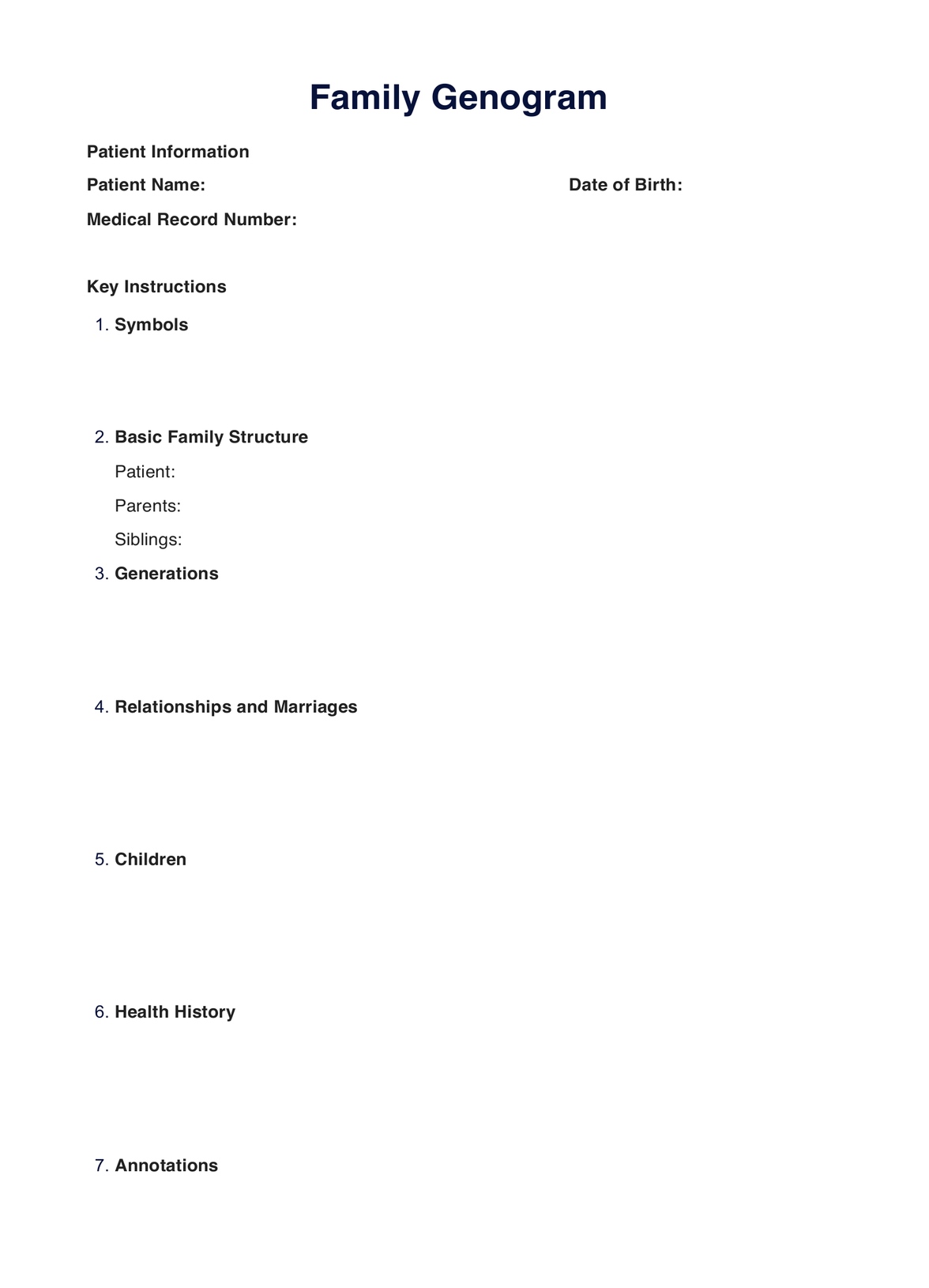Creating a template is easy. Simply choose a customizable template, add family members, and use symbols and lines to represent relationships and traits.

Family Genogram
Create insightful Family Genograms effortlessly with our user-friendly Family Genogram Template. Visualize relationships, health history, and more. Start today!
Family Genogram Template
Commonly asked questions
Family Genogram Templates are used in various settings, including therapy, counseling, healthcare, and research. They help individuals and professionals understand family dynamics, identify patterns, and address challenges.
These templates are used by adding family members, relationships, and traits using symbols and lines. The visual representation aids in analyzing family structures, communication patterns, and health trends, providing valuable insights for therapeutic interventions or personal reflection.
EHR and practice management software
Get started for free
*No credit card required
Free
$0/usd
Unlimited clients
Telehealth
1GB of storage
Client portal text
Automated billing and online payments











